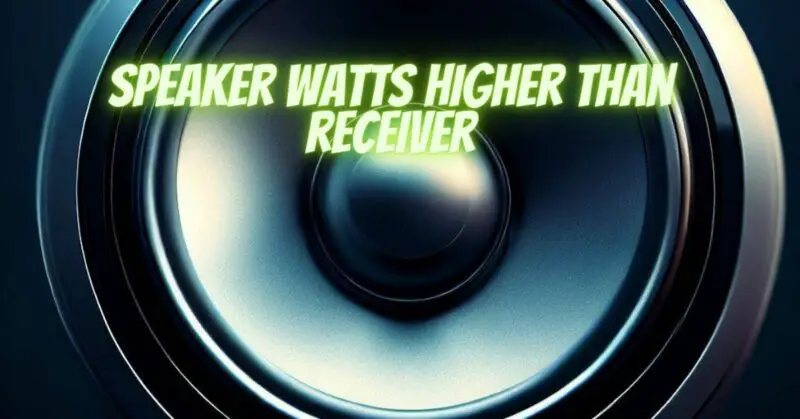A common dilemma faced by audio enthusiasts when assembling a sound system is the mismatch between speaker watts and receiver watts. The question arises: Is it safe to use speakers with a higher power rating than the receiver’s output? In this article, we will delve into the implications of this power disparity and explore the potential risks and best practices for ensuring a harmonious and safe audio setup.
Understanding Speaker Watts and Receiver Watts:
Speaker Watts (Power Handling): Speaker watts, often referred to as power handling or RMS rating, indicate the amount of continuous power that a speaker can handle without the risk of damage. It is crucial to match the power handling capabilities of the speakers to the power output of the amplifier or receiver to prevent overloading and potential speaker damage.
Receiver Watts (Power Output): Receiver watts represent the maximum power output that the amplifier section of the receiver can deliver to the connected speakers. It is essential to understand the receiver’s power output capabilities to ensure that it can adequately drive the speakers without strain.
The Power Mismatch Dilemma:
When speakers have a higher power handling capacity than the receiver’s power output, audio enthusiasts may feel hesitant about using them together. This concern arises from the fear of overpowering the speakers and causing damage to the speaker components, especially at higher volume levels.
Considerations and Best Practices:
While a power mismatch can potentially cause issues, there are several factors to consider to ensure a safe and enjoyable audio experience:
- Speaker Sensitivity: Consider the sensitivity rating of the speakers. Speakers with higher sensitivity can produce sufficient volume with less power, reducing the risk of overpowering them.
- Amplifier/Receiver Settings: Use caution when setting the volume levels. Avoid pushing the receiver to its maximum output, as this may lead to distortion and potentially damage the speakers. Setting the volume to a reasonable level that provides adequate loudness without straining the receiver is advisable.
- Dynamic Range: Consider the typical listening habits and content. Music or audio with wide dynamic range (fluctuation between soft and loud passages) may place higher demands on the receiver. Choose speakers with power handling capabilities that match the dynamic range of the content.
- Use an External Amplifier: If your receiver’s power output is significantly lower than the power handling of the speakers, consider using an external power amplifier that matches the speakers’ power rating. This setup can ensure that the speakers receive the required power without straining the receiver.
- Bi-Wiring or Bi-Amping: Bi-wiring or bi-amping (using separate amplifiers for different speaker drivers) can distribute power more effectively to the speakers, potentially reducing the risk of overpowering them.
While using speakers with higher power handling than the receiver’s output can present potential risks, it is not an absolute deal-breaker. By understanding the sensitivity of the speakers, setting appropriate volume levels, and considering the dynamic range of the content, you can mitigate the risks and enjoy a safe and satisfying audio experience.
If you find that the power mismatch is significant or you frequently listen at higher volume levels, using an external power amplifier or bi-wiring/bi-amping can be effective solutions. These options allow for proper power distribution, ensuring that the speakers receive the required power while relieving the strain on the receiver.
Ultimately, proper system matching and responsible volume control are key to achieving optimal performance, protecting your equipment, and experiencing the full potential of your speakers without the worry of overpowering them.


